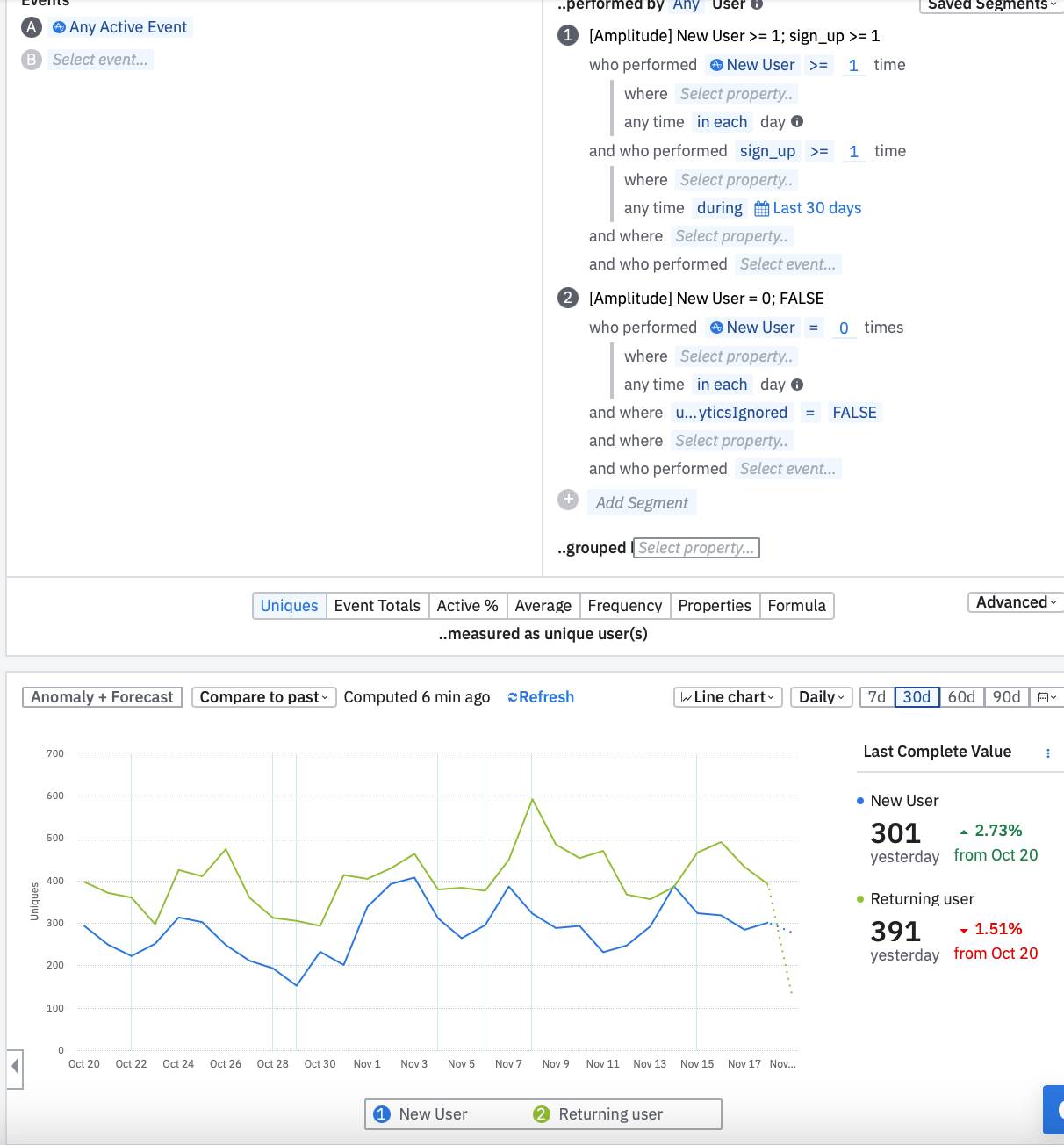Hey guys! How can I see returned users only? I want to see their behaviour excluding new users.
I need to better understand the difference in behaviour between New users vs returned users. Is there a way to do this in Amplitude (I can see this thread which essentially asked this question here- but found it confusing to follow)
Thank you,
Cara
See returning users (excluding new users)
Best answer by Yuanyuan Zhang
Hi
This is Yuanyuan from the Amplitude Support team - thank you for writing in!
Amplitude defines a new user as someone who has logged an event for the first time (this includes inactive events), and we have a default Amplitude event ‘New User’. With this event in mind, I made an example chart to differentiate new users and returning users for you. Is the what you were looking for?
Please let me know. Looking forward to hearing back from you!
Best,
Yuanyuan
Reply
Welcome to the Amplitude Community!
If you don't have an Amplitude account, you can create an Amplitude Starter account for free and enjoy direct access to the Community via SSO. Create an Amplitude account. You can also create a Guest account below!
If you're a current customer, select the domain you use to sign in with Amplitude.
analytics.amplitude.com analytics.eu.amplitude.comWelcome to the Amplitude Community!
If you don't have an Amplitude account, you can create an Amplitude Starter account for free and enjoy direct access to the Community via SSO. Create an Amplitude account. Want to sign up as a guest? Create a Community account.
If you're a current customer, select the domain you use to sign in with Amplitude.
analytics.amplitude.com analytics.eu.amplitude.comEnter your E-mail address. We'll send you an e-mail with instructions to reset your password.








